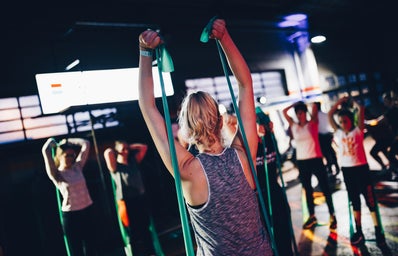Are you finding yourself stressed with all of the work that is packed into six short weeks of Summer B classes?
Did you ever think of turning to yoga for stress and anxiety relief?
Studies have shown that 80% of college students suffer from stress on a daily basis. With this number rapidly increasing, doctors are more prone to prescribing college students antidepressants or benzodiazepines. Doctors do not take into consideration the damage these drugs do to patients organs or the side effects that are associated with the medication. Even though antidepressants do have a significant effect on decreasing the symptoms of anxiety, they also carry serious side effects.
Zoloft, the most commonly prescribed antidepressant, can produce side effects such as: worsening anxiety, suicidal thoughts, insomnia, headache, dizziness and nausea. Xanax, the most popular benzodiazepine, which is prescribed for immediately relief from anxiety, is one of the most addictive medications on the market. Xanax can cause side effects such as: dizziness, drowsiness, clumsiness, forgetfulness, slurred speech, and the list goes on and on.
Rather than spending hundreds of dollars on medication and harming your body with toxins, try taking a yoga class for stress and anxiety relief. Yoga is a holistic approach to medicine. Yoga calms the mind by focusing on the breath. Try these four yoga poses for immediate relaxation.
1. Sitting Meditation, ten minutes. Sit in a comfortable seated position. Focus on your breath and try your best to clear your mind.
It is okay to welcome thoughts, but dismiss them with focusing on your breath. The goal of mediation is to not make your mind blank but to replace the anxiety and distractions with a relaxed focus.
2. Shoulderstand (Salamba Sarvangasana), 30 – 90 seconds. To come into this pose, lay on the floor. Lay your arms by your side, bend your knees, and contract your abdominal muscles. Lift your legs up so your feet are facing the ceiling.
Breath here for as long as you are comfortable. Once you feel comfortable and confident, allow your feet to fall back behind you. Make sure your neck feels comfortable at all times.
From here you will strengthen your spine lifting your body on to your shoulders with your legs in a vertical line in the air. To come out of shoulderstand, carefully roll out one vertebra at a time.
3. Tree Pose (Vrksasana), 60 seconds. Start by standing and bending your right leg. Find your balance. Once you have found your balance bring your right foot to the inside of your left thigh and press your foot against your thigh.
Bring the palms of your hands together at heart center and balance here. Be sure to keep your hips squared forward, allowing your hips and knees to open.
4. Relaxation Pose (Savasana), five to ten minutes. Lie on your back fully relaxed with your arms by your side hands facing up. Once you find yourself comfortable, simply begin to relax and observe your breathing.
In yoga we practice deep breathing, breaths that come from within the stomach. Deep breathing will begin to relax the nervous system, helping you feel relaxed.
If you have found these four simple yoga poses to benefit you, I highly suggest trying a yoga class and taking the time to incorporate yoga into your daily life. The USF campus recreation center offers free yoga classes to students. Click here to find USF’s group fitness calendar.
-Namaste
Photo Credits:
Personal Archive
http://drprem.drpremandassocia.netdna-cdn.com/life/wp-content/uploads/si…

